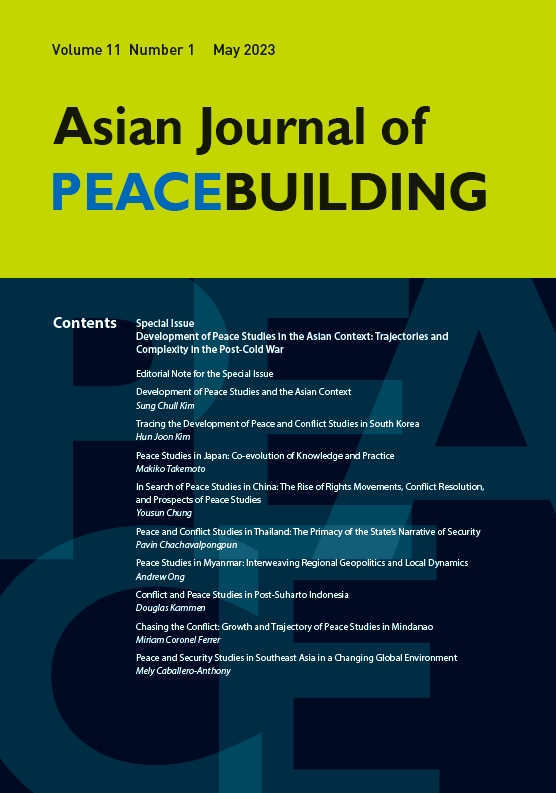This article surveys the trajectory of peace and conflict studies in Myanmar—from its early focus on civil war and insurgency, to state institutions and ethnic armed actors, and later broadening into relational and networked approaches covering formal peace processes, regional geopolitics, conflict economies, and everyday peacebuilding. It suggests that the widening of peace and conflict studies was brought about by the opening of the country from the early 2010s, which both granted scholars and researchers more access to the country and introduced new foreign specialists, discourses, and developmental actors into the political sphere. The peace agenda and directions of peace studies have been upended by the military coup of 2021; how reconciliation, justice, and federal democratic reform will look like in the future remains to be seen.
Back Issues
Special Issue_Development of Peace Studies in the Asian Context: Trajectories and Complexity in the Post-Cold War
Peace Studies in Myanmar: Interweaving Regional Geopolitics and Local Dynamics
Andrew Ong pp. 119-144 doi: 10.18588/202305.00a339
PDF Download

